Which comes first: supply or demand? This question has serious policy implications, especially as President Barack Obama proposes $447 billion in additional stimulus spending in order to try to spur job growth in America.
“Demand-siders,” also known as Keynesians (after influential economist John Maynard Keynes), insist that short-run economic fluctuations are caused by shocks to the economy that leave aggregate demand—the total amount of money spent on goods and services in the economy—below full capacity. In their view, since less money is spent on goods and services, businesses must lay people off, which further reduces spending, resulting in more layoffs, causing even less spending, and so the cycle goes. The policy argument is that government must step in and spend—at a deficit—in order to prop up total demand.
Another theory, however, first put forth by Jean Baptiste Say, an economist in the 19th century, articulates that supply creates demand. It became broadly known as “Say’s Law,” and has policy implications for “supply-siders.” Say’s Law stipulates that, since supply creates its own demand, overproduction—the creation of goods and services without an equal flow of demand for those goods and services—is impossible. This renders Keynesian policy useless at best and destructive at worst (since it interferes with normal free-market processes).
So which theory is correct?
In normal, meaning non-recessionary, times, with full employment and reasonably flexible wages, Say’s Law holds. To paraphrase Henry Hazlitt, supply creates its own demand, because at its most fundamental, supply is demand: “The supply of the thing they make is all that people have, in fact, to offer in exchange for the things they want.” In that sense, the supply of a farmer’s crops constitutes his ability to demand an automaker’s automobile.
In bad times, however, excess supply is indeed possible. That’s why during recessions many businesses have unsold inventory: Supply and demand are out of equilibrium. So does this mean that Keynesians are correct—that, in bad times, government can prop up demand by deficit spending? Not quite.
While the understanding of Say’s Law described thus far is imperfect, a broader understanding of it vindicates supply-siders and denies demand-siders.
This slightly more sophisticated understanding of the law states that production creates demand. Say wrote: “It is production which opens a demand for products…Thus the mere circumstance of the creation of one product immediately opens a vent for other products.” In other words, the demand one has for goods and services comes from the income he or she produces.
So what does this mean in terms of policy implications?
It means that production ultimately drives both supply and demand. Recessions and booms therefore begin on the supply side, with shocks to productivity and labor supply. The key to stimulating an economy out of recession is to stimulate production, not aggregate demand.
The way to encourage more production is to increase incentives for additional labor and investment. Taxes on income, corporate earnings, dividends and capital gains, among others, penalize production and are disincentives to additional work effort. Reducing those disincentives encourages people to take on additional work, resulting in more production in the economy, elevating both total supply and demand in tandem.
Among politicians and academics, Keynesian philosophy is ubiquitously accepted. However, its repeated failures over the last few years have left Americans seeking an alternative explanation for what their common sense already tells them: No economy can spend its way to prosperity, whether it’s $447 billion or $845 billion.



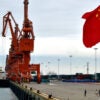


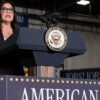

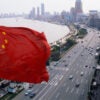



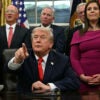










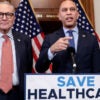




6 Replies to “Does Supply Create Demand?”